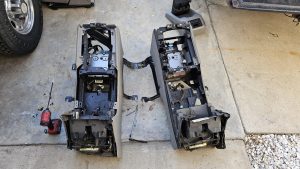
Electric Vehicle Maintenance and Repair Basics: Your No-Sweat Guide
So, you’ve made the leap to an electric vehicle. Good for you. The quiet hum, the instant torque, the never-stopping-at-a-gas-station-ever-again feeling. It’s fantastic. But then a question pops into your head… wait, how do I even take care of this thing?
It’s a fair question. The truth is, maintaining an EV is a different beast than a gas car. Honestly, it’s often simpler. Less moving parts, less fluids, less… well, hassle. But it’s not maintenance-free. Let’s dive into the electric vehicle maintenance and repair basics you actually need to know.
The Big Difference: What You Don’t Have to Do Anymore
This is the best part. Say goodbye to a whole host of traditional car chores. You can officially retire these from your vocabulary:
- Oil changes. That’s right. No more messy oil drains or filters. The electric motor doesn’t need it.
- Spark plug replacements. No ignition system, no plugs. Simple.
- Timing belts. Nope.
- Exhaust system repairs. Muffler? Catalytic converter? What are those?
- Emissions tests. In most places, your zero-emissions vehicle gets a free pass.
That alone saves you a significant chunk of time and money over the life of the vehicle. The core of EV upkeep shifts from complex mechanical systems to the battery, software, and a few key components.
The Heart of the Matter: Battery Health
The battery pack is the soul of your EV—and its most expensive component. Protecting its health is priority number one. Think of it like the engine in a gas car. Here’s how to treat it right.
Charging Habits for Longevity
You don’t need to be an electrical engineer. Just follow a few simple rules.
- Avoid constantly charging to 100%. For daily driving, setting your charge limit to 80-90% is the sweet spot. It reduces stress on the battery cells. Save the 100% charge for when you really need the full range for a road trip.
- Don’t let it sit at 0%. Just like you wouldn’t want to run a gas car completely out of fuel, avoid deep discharging your EV battery. If you’re storing the car for a long time, aim to leave it with about a 50% charge.
- Embrace ABC: “Always Be Charging.” This doesn’t mean always be filling it. It means plugging in when you’re at home. This lets the car’s thermal management system use wall power to keep the battery at a happy temperature, which is crucial for its health.
- Use DC Fast Chargers wisely. They’re incredibly convenient on a long journey, but frequent use can accelerate battery degradation over time. For everyday use, Level 2 charging at home is like a home-cooked meal for your battery—reliable and healthy.
The EV Maintenance Checklist: What You Actually Need to Do
Sure, there’s less to do. But you’re not completely off the hook. Here’s your basic EV maintenance schedule.
Tire Care and Rotation
This one is huge. EVs are significantly heavier than their gas counterparts due to the battery pack. That weight, combined with instant torque, means tires wear out faster. You’ll want to check tire pressure monthly (proper inflation maximizes range) and rotate them as recommended in your manual, usually every 6,000 to 7,500 miles.
Brake System Check-ups
Here’s a fun fact: you’ll probably never need to replace your brake pads. Well, almost never. That’s because of regenerative braking, which uses the motor to slow the car and recapture energy. It means you’re using the physical friction brakes far less often.
That said, you should still have the brake fluid checked every two years or so. And because the brakes are used so little, they can sometimes get a bit corroded from disuse. A yearly inspection is a good idea.
Cabin Air Filter Replacement
This is identical to a gas car. A clean cabin air filter keeps the air inside your car fresh and ensures your HVAC system doesn’t have to work too hard. Most manufacturers recommend a change every 15,000 to 20,000 miles.
Coolant System
Wait, I thought there was no engine? There isn’t. But the battery and power electronics still need to be kept at an optimal temperature. They use a coolant system to do this. This fluid typically lasts much longer than engine coolant—sometimes up to 100,000 miles or more—but it still needs to be checked and eventually replaced. Leave this to the pros during your scheduled service.
When Things Go Wrong: The Repair Landscape
Okay, so what about repairs? This is where it gets interesting. The simplicity of the drivetrain means fewer things can break. No alternators, starters, or fuel pumps to fail.
However—and this is a big however—when something does go wrong with the high-voltage system, it’s not a DIY job. Never, ever attempt to repair the battery, wiring, or motor yourself. These systems carry enough voltage to be extremely dangerous. This is strictly a job for certified EV technicians.
Finding a qualified mechanic is a genuine pain point for some EV owners outside of major metro areas. Not every local shop is equipped or trained to handle them. Your best bet is often the dealership or a specialist EV repair shop. The good news? As the number of EVs on the road explodes, so does the network of technicians who know how to fix them.
The Software Surprise
Here’s a twist you might not have considered: your car is now a computer on wheels. Many issues, from minor glitches to performance updates, can be fixed with over-the-air (OTA) software updates. You might wake up one morning to find your car’s range has improved or its charging speed has been optimized, all without ever visiting a service center. It’s a whole new world.
A Quick Glance: Gas vs. Electric Maintenance
| Maintenance Item | Gasoline Vehicle | Electric Vehicle |
| Oil Change | Every 5,000-10,000 mi | Not Needed |
| Spark Plugs | Every 30,000-100,000 mi | Not Needed |
| Brake Pads | Every 30,000-50,000 mi | Up to 100,000+ mi |
| Engine Air Filter | Every 15,000-30,000 mi | Not Needed |
| Coolant Flush | Every 30,000-50,000 mi | Every 100,000+ mi |
| Tire Rotation | Every 5,000-7,500 mi | Every 6,000-7,500 mi |
See the pattern? Less frequent, less intensive, and frankly, less expensive over the long run.
The bottom line? Owning an EV simplifies your relationship with car care. It shifts the focus from mechanical upkeep to smart charging and basic, common-sense checks. It’s not a zero-maintenance ownership experience, but it’s arguably a smarter, more modern one. You’re not just driving into the future—you’re maintaining it, too.



